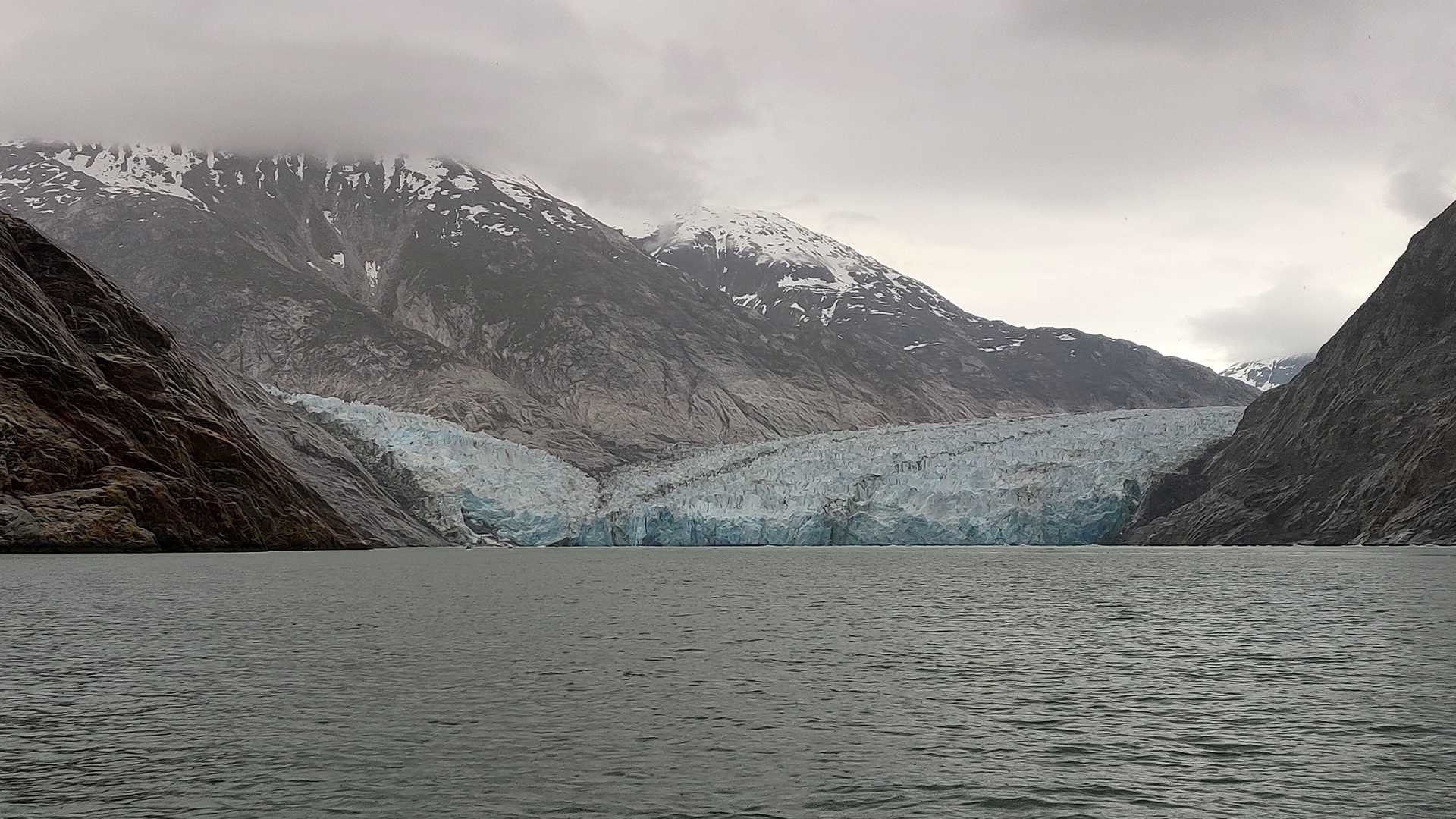We spent the day exploring Endicott Arm, a 30 mile-long, narrow, steep-sided fjord. This beautiful waterway is the southern extension of a bifurcated fjord system partnered with Tracy Arm to the north. It all was carved out of the continental terrain long ago and empties into what is now Stephens Passage, which separates Admiralty Island from the mainland. The vast ice field that feeds this system actually reaches into the Canadian province of British Columbia. When National Geographic Venture had neared the head of Endicott Arm by mid-morning, we launched our Zodiacs into ice-strewn water to reach the terminus of an impressive and quite active ‘river of ice’ known as Dawes Glacier (Figure A). The craggy face, or tongue, of this magnificent ice structure has retreated several miles in the last few decades and has now backed up all the way to the confluence of a smaller, as yet unnamed glacier that feeds into it from the north. In another few years, they will probably become separated and there will then be two tidewater glaciers we can explore with our Zodiacs!
The day proved to be an excellent opportunity to gain college credit in the study of glaciology, as we saw textbook examples of glacially carved terrain that included smooth, rounded mountains with domes and cirques and U-shaped valleys (Figure B). The exposed rock faces show evidence of glacial carving, that is, horizontal scratches and gouges cut by rock-studded glacial movement as the ancient ice pushed against the rock walls as it moved downhill toward the sea. It was fascinating to observe how plant life is slowly reinhabiting the newly exposed rock formations as the ice has disappeared (Figure C). This is a process that continues today because we could clearly discern where ice has recently disappeared and uncovered new regions of the geology. It must be incredibly difficult for plants to establish themselves on bare rock that has been scraped completely clean by the ice. In spite of this, the flora is fairly extensive and there are even some good-sized alders and spruce trees on the steep-sided walls of the fjord. Isn’t nature wonderful?!
There was lots of ice floating in the fjord, all of which had come from Dawes Glacier, and it was great fun to push through it with our Zodiacs. We sighted numerous harbor seals (mostly mothers and pups) resting on some of the larger pieces of ice (Figure D). The ice came in all shapes and sizes and could be categorized as brash ice, growlers, bergy bits, and a few grand blue-colored ice bergs (Figure E). We learned floating ice that contains lots of air bubbles appears white, because visible light reflects off the surface or very near the surface and is not changed significantly to our eyes. Large clear pieces of ice, especially huge icebergs, are very different in that light waves can penetrate deeply into the ice and create a blue appearance. This is not an optical illusion, because it shows up in our photographs. In fact, it is the same phenomenon that makes deep clear ocean water appear blue. When visible light enters deeply or passes all the way through large chunks of clear ice, the longer, lesser energetic light waves (red, orange, yellow, green) are absorbed, which allows only the shorter, more energetic light waves (blue, indigo, violet) to escape and be discerned by our eyes.
Our vessel retraced the same route back out of the fjord, which gave us a chance to see much of the fjord that most of us did not see early this morning. There are countless waterfalls and cascades along the rock walls of Endicott Arm, most of which are created by meltwater from the snowbanks high in the surrounding mountains. Of course, the cold drizzle we encountered in the afternoon surely added to the runoff.







